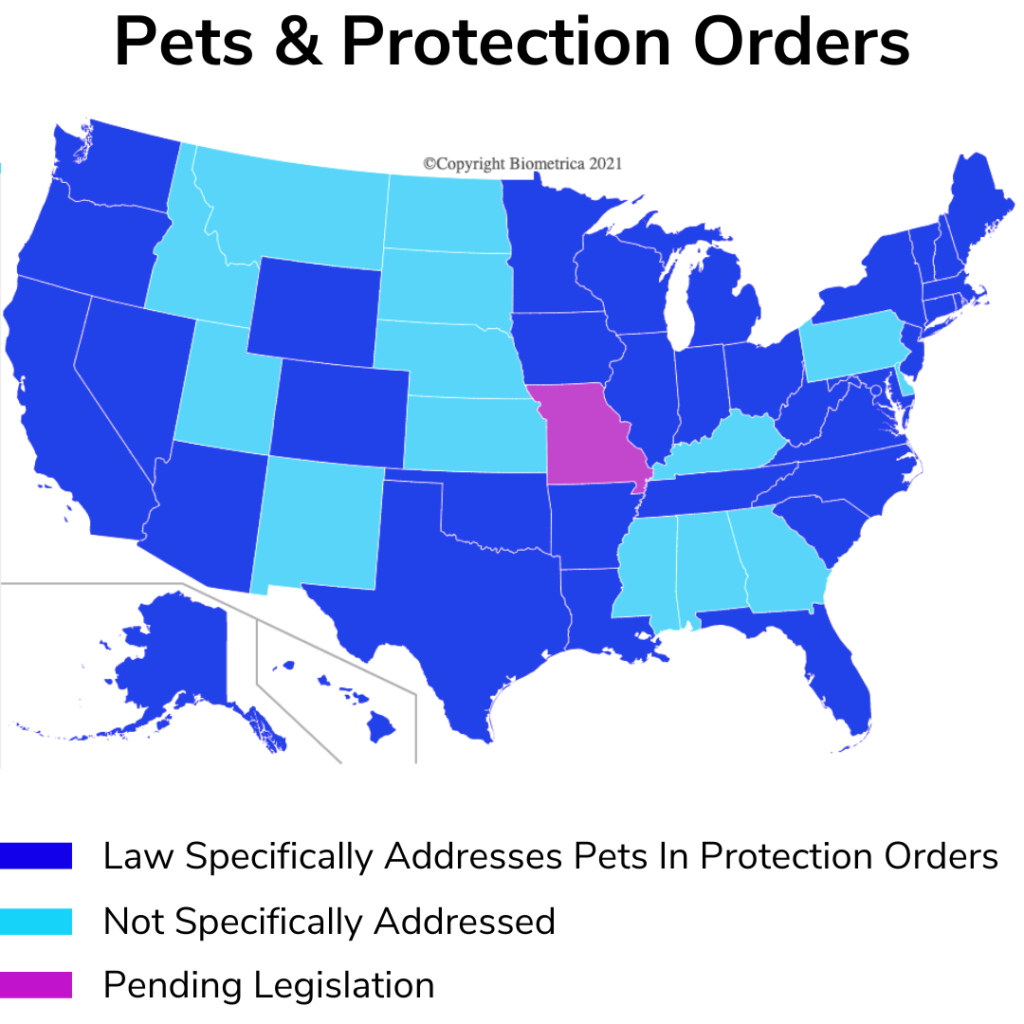
Protection Orders: Does Your State Protect Your Pet In A Domestic Violence Situation?
By Charlotte Spencer
Protective orders, also known as protection orders, are designed to protect people or animals from an ongoing threat. They are often used in domestic violence cases, and can vary a lot by jurisdiction. They are not by any stretch a complete solution, but they are an important tool. They contain actions which the person subject to them is prohibited from doing, and penalties for breaking these prohibitions. Most U.S. states now specifically include animals in the language of their laws that allow for protection orders, but a little under a third of states still do not.
Why Is This Important?
Including pets in protective orders is important for several reasons. First, victims of domestic violence often hesitate to leave an abusive situation for fear that abusers will strike out at their pets. This can cause victims to stay in situations where they will later be hurt or killed. Second, there is a known, and well documented connection between abuse of animals and abuse of people. Third, abusers often attempt to leverage control over victims by threatening to hurt people or animals who the victim is close to. Fourth, this adds to actions which will cause an abuser to be arrested and imprisoned, and thus improves the chances that an abuser will be removed from the environment in which he or she has the opportunity to harm victims.
Federal Law
Under 34 U.S.C. §20127, Federal law puts a system in place to award grants specifically for domestic violence shelters that allow people to bring their pets with them, and under 18 U.S.C. §48, Federal Law prohibits animal abuse, and distribution of animal abuse videos or photos. 18 U.S.C. §2262 deals with interstate violation of a protection order, because interstate violation (violation that crosses state lines) is what the Federal government has jurisdiction over in terms of such crimes. It’s important to note that under this law people can be penalized for breaking such a protective order even if the order was issued by an entity other than the Federal government. This law can be applied to enforce protective orders regardless of whether those orders were issued by jurisdictions that specifically provide for inclusion of pets in orders or not. According to the wording in this law this includes violations against “another person or the pet, service animal, emotional support animal, or horse of that person…”

How Do These Laws Vary By State?
Today 35 states, plus D.C. and Puerto Rico have protection order laws that specifically include animals. Missouri will soon become the 36th state to have such laws in effect. See the section below this one for more on Missouri. These laws vary from state to state, but many contain similar language.
Similarities:
- Most specify that a judge can grant a petitioner exclusive “care, custody, and control” or “care, possession, and control” of a pet.
- Most include “any animal owned, possessed, leased, kept or held by either party or a minor child residing in the household.”
- Most include descriptions of forbidden behavior including taking, concealing, transferring, neglecting, injuring, torturing, and killing animals.
Differences:
Some states contain differences in these laws that highlight conditions unique to that state, or differences in the law-makers’ focus. Here are some notable examples.
- Whereas most states include a broader definition of pet, Alaska specifically excludes “dogs primarily owned for participation in a generally accepted mushing or pulling contest or practice or animals primarily owned for participation in rodeos or stock contests.”
- Some states include pets, companion animals, and service animals, but not livestock, farm animals, or wild animals. Other state’s language simply says “any animal.”
- Most states with such laws directly provide for the protection of animals, whereas a few states count animals as “essential personal items,” “personal property,” or “essential personal effects” and provide for the protection of these categories.
- Some states’ language addresses behavior against animals in and of itself, while other states’ language addresses behavior against humans using animals as proxies. For example, Arkansas defines harming a spouse’s pet as emotional abuse of the spouse. Colorado includes a crime against an animal “…as a method of coercion, control, punishment, intimidation, or revenge directed against a person with whom the actor is or has been involved in an intimate relationship.”
- Some states include threatening to harm or kill animals, while other states only address actually harming and killing animals.
Pending Legislation
May 3, 2021 SB 71, which would add Missouri to the states that include pets in their laws concerning protection orders, passed almost unanimously. It will now go to the Governor’s desk for signing. It includes “A temporary order of possession of pets where appropriate.” It also specifically includes “committing or threatening to commit domestic violence, molesting, stalking, sexual assault, or disturbing the peace of the petitioner, including violence against a pet…” This has an effective date of August 28, 2021.
Where Can I Find More Information On This?
For future updates to these laws, or specifics in your state, you may be interested in Michigan State University’s Animal Legal and Historical Center website. For more on the link between abuse of animals and abuse of people you may be interested in the National Link Coalition’s website.
This article was last updated May 5, 2021. The information provided in this article should not be considered legal advice or a substitute for legal advice. Biometrica is not a law firm and cannot offer legal advice.